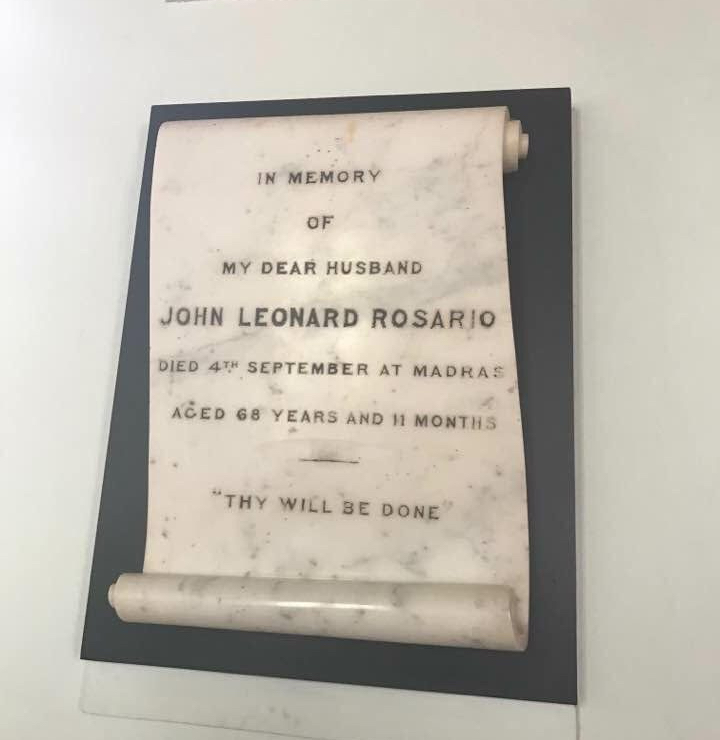
There was a saying in the 70’s that anyone coming from Chennai by the morning train to Calcutta would land himself a job by the evening. If one were to link Calcutta’s identity to its communities, the obvious answer would be the Bengalis, Punjabis, Marwaris and Sindhis. However, the South Indian community is significantly etched in Calcutta’s diasporic identity. Lake Market, Ballygunge and the Rashbehari stretch has been considered a bastion for various South Indian communities in the city such as the Telugus, the Tamil and Kannadigas.
South Indians had a monopoly in accounting and secretarial jobs. Banks would be brimming with South Indians. But where are the industries to hire them now? Big industrial and business houses like Balmer Lawrie, Andrew Yule, Brooke Bond, Burma Shell and Imperial Tobacco once played host to several South Indian employees. However, the economic milieu within West Bengal have forced the communities to either return to states in the south, or move to other industrial and business hubs in the country.
The first two generations considered this place their home and even bought property here, but the younger generation does not share the same sentiments. I was born in a family with Tamil, Kannadiga, North Indian and Bengali roots that moved from West Bengal to Karnataka thus the languages and with it; a part of my identity changed and became a medley of Bengali, English, Tamil and Kannada. Calcutta is a big city with multicultural, multilingual communities— not that they do not interface with each other, but they also dwell within their cocooned existence. You have relatives, organizations and societies of your own community, that being so, you make your own bubble and stay inside it. In Calcutta, I grew up in mixed surroundings.
At home, I love starting the day with a south Indian breakfast, followed by a hearty bengali meal with fish and rice and ending the day with a North Indian sabzi and roti. The odd montage of food habits at home pay homage to the distinctive blend in my family tree. While my comfort food on a dull and dreary rainy day will always comprise of ‘aaloo bhaath’ I have also found comfort in the simplicity of curd rice.
I fondly remember my mother taking me to Komala Vilas occasionally after school to eat the thali, while she would tell me stories about my thatha, who migrated from Tamil Nadu to West Bengal. People from Tamil Nadu came to West Bengal more prominently in the 1950s and 1960s, Brahmins left Tamil Nadu en masse because of political reasons. Some settled in Mumbai’s Matunga area, some in Delhi, and many came to Calcutta. Since flights were impossibly expensive in those days, people thronged the city in trains. It would take three days for people to reach Howrah station from Madras Central. Calcutta was then seen as a land of opportunity by many Tamilians. Ramakrishna Lunch Home and Komala Vilas were among the first Tamil messes. The former was called Patima Hotel. ‘Patima’ means grandmother in Tamil. The Lake Market area, was once populated with more than two lakh Tamilians. Vocational training was given as much emphasis as providing shelter. When the British left, they left much of their business to their munshis, who were mostly Marwaris. While the Marwaris had business acumen, they lacked communication skills. Tamilians may not have been comfortable with Hindi, but they had no problem with English. They easily got those jobs.
In fact, the Calcutta South India Club situated in the heart of the city lies testament to Calcutta’s South Indian community. For several years it has been earmarked as a remarkably popular place for South Indian food and for various South Indian communities to celebrate their regional festivities. The South India Club became an institution. The Noble Laureate, Sir Chandrasekhara Venkata Raman (CV Raman) used to stay in the club when he was in the city. The scientist was the club’s first president (1926-28), and was followed by S. Radhakrishnan who took over from 1928 for a year and later went on to become the second President of India.
While Calcutta may be charaterized by its ‘Babu culture’, the various communities immortalize its multicultural heritage. The community once bore its flagship in Lake Market, Ballygunge and Rashbehari. In Sarat Bose Road, Ashok Stores boasts of a modest signboard on the wall outside with the shop name written in Bengali and English in old fonts. Its unpainted exterior and an absolute disregard for display and decoration looks like the stereotypical neighbourhood store from a few decades ago. The shop was a lifeline for the south Indian communities in the city, who lived mainly in this area. It sold — and still sells — all food products used in cooking in all the southern states. Now many from these communities have left Calcutta, but that has not made a difference to this shop. Now more than South Indian people, others buy South Indian products. Papads, in a wide range, including a tapioca variety, are one of the best-selling items, along with coffee (of course, there has to be coffee). The most bewildering range, however, is of the spices and ready-mix masalas. With the regular sambar and rasam mixes and lemon rice and puliyogare rice are garlic rice powder, ghee dhal powder and a karela powder. It is a small garden of earthly delights, waiting to unlock its sharp, distinct flavours, promising glimpses into ways of life that lie outside the everyday and the familiar, yet next to us.
For a long time, especially between 1994 and 2012 familiarity came in the form of kosha mangsho and aaloo makha, but over time beetroot poriyal and curd rice have become unequivocally comforting for me. After spending a decade in Bangalore, I have recently made Calcutta my home again but the emotion of feeling like a stranger in a strange land lingers ever so often when I am home. However, I may seek refuge in knowing that Calcutta still plays host to a few of these bastions from the community.






















You must be logged in to post a comment.